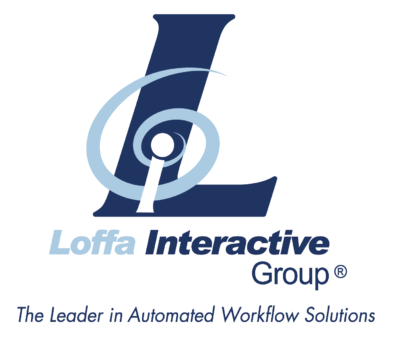Transforming Brokerage Operations: How SaaS Solutions Drive Efficiency and Enhance Security
I n the swiftly changing financial markets, operational efficiency is not just a bonus—it’s a necessity, particularly with the transition to T+1 settlement cycles right around the corner. This shift is poised to redefine the landscape of financial transactions, impacting risk, liquidity, and the overall pace at which the markets operate. Today, let’s explore how brokerages can harness operational efficiency to secure a competitive advantage in this new era.
n the swiftly changing financial markets, operational efficiency is not just a bonus—it’s a necessity, particularly with the transition to T+1 settlement cycles right around the corner. This shift is poised to redefine the landscape of financial transactions, impacting risk, liquidity, and the overall pace at which the markets operate. Today, let’s explore how brokerages can harness operational efficiency to secure a competitive advantage in this new era.
Understanding the Shift to T+1
Transitioning from T+2 to T+1 isn’t merely a regulatory change—it’s a strategic evolution designed to increase market efficiency and reduce risk exposure. For brokerages, this means a significant overhaul of internal processes to handle faster settlements effectively. How can your firm prepare to thrive under these tighter timelines?
Pathways to Enhanced Operational Efficiency
Enhancing operational efficiency in a T+1 environment involves several key strategies:
- Streamlining Processes: It’s time to tighten up those workflows. This means reducing manual interventions, enhancing automation, and ensuring that every step from trade execution to settlement is as efficient as possible.
- Embracing Technology: Technologies like AI and machine learning aren’t just fancy tools—they are essentials in speeding up decision-making processes, from assessing risks to ensuring compliance, all within the tight T+1 deadlines.
- Mastering Data Management: In a T+1 world, handling data efficiently is more critical than ever. Systems need to be robust enough to process increased volumes of transaction data quickly and accurately to support timely and informed decision-making.
Compliance: Your Operational Backbone
The reduced settlement period of T+1 leaves little room for error. Efficient, automated compliance systems are vital, performing real-time checks to ensure all transactions meet regulatory standards. This not only helps avoid fines but also boosts your firm’s reputation, enhancing trust among clients and investors.
The Pivotal Role of Compliance in Operational Efficiency
 As the financial industry gears up for the T+1 settlement era, compliance emerges as a central pillar in maintaining and enhancing operational efficiency. With tighter turnaround times for settlements, the margin for error shrinks significantly, placing a premium on having robust compliance mechanisms that do more than just prevent violations—they drive efficiency.
As the financial industry gears up for the T+1 settlement era, compliance emerges as a central pillar in maintaining and enhancing operational efficiency. With tighter turnaround times for settlements, the margin for error shrinks significantly, placing a premium on having robust compliance mechanisms that do more than just prevent violations—they drive efficiency.
Compliance as a Catalyst for Streamlining Operations
- Real-Time Monitoring Systems: In the T+1 framework, delays in identifying compliance issues can lead to failed settlements and severe penalties. Implementing real-time monitoring systems allows brokerages to detect and rectify compliance issues instantly, ensuring that transactions are both compliant and timely. This real-time capability not only mitigates risk but also enhances the speed of transaction processing.
- Integrated Compliance Solutions: By integrating compliance checks directly into the transaction and settlement processes, firms can eliminate the need for retrospective audits that slow down operations. For example, integrating automated compliance software that aligns with SEC regulations and continuously updates with changes can keep transactions flowing smoothly without manual intervention.
- Data Integrity and Accuracy: Effective compliance depends on the accuracy and integrity of transaction data. In a T+1 environment, ensuring data quality becomes critical as the input directly impacts compliance outcomes. Investing in systems that provide real-time data validation and cleansing will bolster compliance efforts and reduce the likelihood of transaction disputes or regulatory fines.
Compliance as a Strategic Advantage
Beyond just meeting regulatory requirements, proactive compliance can be a significant competitive advantage. Here’s how:
- Risk Mitigation: By identifying potential compliance issues before they result in fines or reputational damage, firms can operate more confidently and aggressively in their market activities.
- Investor Confidence: Firms known for stringent compliance practices are more attractive to investors, who value the reduced risk associated with well-regulated operations.
- Market Leadership: By setting high standards for compliance, firms can lead by example, influencing industry practices and setting themselves apart as leaders in operational integrity.
Adapting Compliance for T+1
 Transitioning to T+1 requires a reevaluation of existing compliance frameworks. Firms must consider the following adjustments:
Transitioning to T+1 requires a reevaluation of existing compliance frameworks. Firms must consider the following adjustments:
- Scaling Technology: Upgrading technological infrastructure to handle increased data flows and integration with real-time compliance tools.
- Training and Development: Continually educating compliance and operational teams on the nuances of T+1 regulations and the importance of swift compliance integration into daily workflows.
- Collaboration with Regulators: Engaging with regulatory bodies to understand expectations and receive guidance on effective compliance practices in a T+1 landscape.
From Theory to Practice: A Case Study
Imagine a brokerage that anticipated the T+1 change and proactively upgraded its systems. By adopting scalable tech solutions and integrating advanced analytics, the firm didn’t just adapt to the new settlement cycle—it improved its operational efficiency by 30%, enhancing client satisfaction and expanding its market presence.
Building an Efficiency-First Culture
Technology and processes are pivotal, but so are the people. Cultivating a culture that values efficiency, continuous improvement, and agility in adopting new technologies can significantly enhance your firm’s ability to manage and benefit from changes.
Looking Ahead
As the T+1 settlement standard approaches, operational efficiency is more than a beneficial strategy—it’s essential for survival and success. Brokerages that view this upcoming shift as an opportunity to streamline their operations and invest in new technologies will likely lead the pack. In the new landscape of financial transactions, operational efficiency is your strategic asset, driving growth and ensuring resilience in the face of industry evolution.
Leveraging SaaS to Enhance Cost Efficiency in Settlement Workflows
In the evolving landscape of financial markets, especially with the shift towards T+1 settlements, the adoption of SaaS solutions stands out as a strategic move to enhance operational efficiency and drive cost savings. SaaS platforms offer numerous advantages that traditional software systems cannot match, particularly in terms of scalability, maintenance, and integration.
Cost-Effective Scaling and Maintenance
- Reduced Infrastructure Costs: SaaS solutions are hosted in the cloud, which significantly reduces the need for brokerages to invest in and maintain costly IT infrastructure. This shift not only lowers capital expenditures but also cuts ongoing costs related to hardware maintenance and upgrades.
- Pay-as-You-Go Pricing Models: Many SaaS providers offer flexible pricing models based on usage, which allows brokerages to pay only for the capacity and features they need. This scalability is particularly beneficial in a T+1 environment, where transaction volumes can fluctuate, requiring dynamic scalability that traditional systems may not handle cost-effectively.
- Automated Updates and Upgrades: SaaS solutions automatically update to ensure all users have the latest features and compliance updates without additional costs or system downtime. This continuous improvement cycle ensures that brokerages can always operate with the most advanced tools without the need for manual interventions or costly customizations.
- High Maintenance Costs: Maintaining robust security measures in-house can be prohibitively expensive. Brokerage firms must not only invest in initial security infrastructure but also bear the ongoing costs of updates, patches, and security personnel. Over time, these costs can accumulate significantly, particularly as security threats become more sophisticated.
- Compliance and Audit Costs: For brokerages developing in-house solutions, the inclusion of these systems in SOC 2 audits, quarterly software security scans, and annual penetration tests is essential but often overlooked in cost assessments. Each of these activities requires substantial resources, both in terms of time and finances, to ensure compliance with industry regulations and standards.
- Resource Allocation: Devoting resources to developing and maintaining security measures for in-house solutions can divert attention from core business activities. This not only impacts the efficiency of operations but also leads to higher costs as firms struggle to balance security needs with operational demands.
Streamlined Operations and Reduced Error Rates
- Enhanced Workflow Automation: SaaS platforms can automate key steps in the settlement process, such as trade confirmation, record reconciliation, and compliance checks. This automation reduces the manpower needed for these tasks and minimizes human errors, which can be costly in terms of both rectification efforts and potential regulatory fines.
- Integrated Compliance Tools: Compliance with the evolving regulatory landscape is streamlined through integrated tools provided by SaaS platforms. These tools are updated in real-time to reflect the latest regulatory changes, ensuring that brokerages remain compliant without the need for constant monitoring or manual intervention. This integration not only saves costs but also protects against compliance-related financial risks.
 Additional Advantages of SaaS: Enhanced Security and Overlooked Cost Savings
Additional Advantages of SaaS: Enhanced Security and Overlooked Cost Savings
While the operational and financial benefits of SaaS are clear, security is another crucial advantage that SaaS solutions provide, particularly in the context of the stringent security requirements in the financial services industry.
Enhanced Security Measures
- Robust Security Protocols: SaaS providers typically invest heavily in security measures that adhere to the highest industry standards, including advanced encryption techniques, secure data centers, and regular security audits. These measures ensure that data is protected against breaches, which is paramount for brokerage firms handling sensitive financial information.
- Continuous Security Updates: Unlike traditional in-house systems where updates may lag, SaaS platforms continuously update their security measures to counter new threats. This proactive approach ensures that security protocols are always at the cutting edge, safeguarding against vulnerabilities that could lead to costly data breaches.
 The security benefits and cost savings associated with SaaS solutions make them an attractive alternative to in-house systems, especially for brokerage firms that must adhere to rigorous security standards while managing costs effectively. By outsourcing the security and maintenance of their settlement systems to specialized SaaS providers, brokerages can not only ensure high levels of security but also free up resources to focus on strategic activities that drive business growth. This shift not only enhances operational security but also provides a more cost-effective solution to the ongoing challenge of cybersecurity in the financial sector.
The security benefits and cost savings associated with SaaS solutions make them an attractive alternative to in-house systems, especially for brokerage firms that must adhere to rigorous security standards while managing costs effectively. By outsourcing the security and maintenance of their settlement systems to specialized SaaS providers, brokerages can not only ensure high levels of security but also free up resources to focus on strategic activities that drive business growth. This shift not only enhances operational security but also provides a more cost-effective solution to the ongoing challenge of cybersecurity in the financial sector.
 Welcome to the fast-paced world of finance, where every second counts, especially now that we’re moving from T+2 to T+1 settlement cycles. Let me introduce you to Sarah, an operations manager at a bustling brokerage firm, who’s right at the heart of this transition.
Welcome to the fast-paced world of finance, where every second counts, especially now that we’re moving from T+2 to T+1 settlement cycles. Let me introduce you to Sarah, an operations manager at a bustling brokerage firm, who’s right at the heart of this transition. Loffa, a provider of state-of-the-art SaaS solutions specialized in streamlining brokerage operations. Loffa promised not only to refine workflows but also to enhance them through Straight Through Processing (STP), ensuring real-time transaction completion without manual intervention, a crucial factor in the T+1 environment. Convincing her team and the board to invest in this technology proved challenging. The task was akin to adding another ball to her juggling act—daunting yet thrilling with the potential for significant efficiency gains.
Loffa, a provider of state-of-the-art SaaS solutions specialized in streamlining brokerage operations. Loffa promised not only to refine workflows but also to enhance them through Straight Through Processing (STP), ensuring real-time transaction completion without manual intervention, a crucial factor in the T+1 environment. Convincing her team and the board to invest in this technology proved challenging. The task was akin to adding another ball to her juggling act—daunting yet thrilling with the potential for significant efficiency gains. Reflections on a Job Well Done
Reflections on a Job Well Done Conclusion: The Path to Efficiency and Excellence
Conclusion: The Path to Efficiency and Excellence

 In the swiftly changing financial markets, operational efficiency is not just a bonus—it’s a necessity, particularly with the transition to T+1 settlement cycles looming on the horizon. This impending shift is set to redefine the landscape of financial transactions, impacting risk, liquidity, and the overall pace of market operations. Today, we explore how brokerages can harness operational efficiency to secure a competitive advantage in this evolving era, focusing on time zone prioritization and the intricate roles in exception processing.
In the swiftly changing financial markets, operational efficiency is not just a bonus—it’s a necessity, particularly with the transition to T+1 settlement cycles looming on the horizon. This impending shift is set to redefine the landscape of financial transactions, impacting risk, liquidity, and the overall pace of market operations. Today, we explore how brokerages can harness operational efficiency to secure a competitive advantage in this evolving era, focusing on time zone prioritization and the intricate roles in exception processing. With the reduced settlement period of T+1, the margin for error narrows significantly. Efficient, automated compliance systems become indispensable, performing real-time checks to ensure all transactions meet stringent regulatory standards. This not only helps avert fines but also enhances your firm’s reputation, bolstering trust among clients and investors.
With the reduced settlement period of T+1, the margin for error narrows significantly. Efficient, automated compliance systems become indispensable, performing real-time checks to ensure all transactions meet stringent regulatory standards. This not only helps avert fines but also enhances your firm’s reputation, bolstering trust among clients and investors.

 Client Instructions Non-adherence:
Client Instructions Non-adherence:
 To prevent such issues, it is crucial for brokerages to implement robust control mechanisms within their operational workflow to ensure that all necessary documentation is reviewed and in place before proceeding with any trades, especially in new accounts. This could involve automated checks or compliance approval processes integrated into the trade lifecycle management system. Please request a demo of Loffa’s PBIN suite.
To prevent such issues, it is crucial for brokerages to implement robust control mechanisms within their operational workflow to ensure that all necessary documentation is reviewed and in place before proceeding with any trades, especially in new accounts. This could involve automated checks or compliance approval processes integrated into the trade lifecycle management system. Please request a demo of Loffa’s PBIN suite.

 n the swiftly changing financial markets, operational efficiency is not just a bonus—it’s a necessity, particularly with the transition to T+1 settlement cycles right around the corner. This shift is poised to redefine the landscape of financial transactions, impacting risk, liquidity, and the overall pace at which the markets operate. Today, let’s explore how brokerages can harness operational efficiency to secure a competitive advantage in this new era.
n the swiftly changing financial markets, operational efficiency is not just a bonus—it’s a necessity, particularly with the transition to T+1 settlement cycles right around the corner. This shift is poised to redefine the landscape of financial transactions, impacting risk, liquidity, and the overall pace at which the markets operate. Today, let’s explore how brokerages can harness operational efficiency to secure a competitive advantage in this new era. As the financial industry gears up for the T+1 settlement era, compliance emerges as a central pillar in maintaining and enhancing operational efficiency. With tighter turnaround times for settlements, the margin for error shrinks significantly, placing a premium on having robust compliance mechanisms that do more than just prevent violations—they drive efficiency.
As the financial industry gears up for the T+1 settlement era, compliance emerges as a central pillar in maintaining and enhancing operational efficiency. With tighter turnaround times for settlements, the margin for error shrinks significantly, placing a premium on having robust compliance mechanisms that do more than just prevent violations—they drive efficiency. Transitioning to T+1 requires a reevaluation of existing compliance frameworks. Firms must consider the following adjustments:
Transitioning to T+1 requires a reevaluation of existing compliance frameworks. Firms must consider the following adjustments: Additional Advantages of SaaS: Enhanced Security and Overlooked Cost Savings
Additional Advantages of SaaS: Enhanced Security and Overlooked Cost Savings The security benefits and cost savings associated with SaaS solutions make them an attractive alternative to in-house systems, especially for brokerage firms that must adhere to rigorous security standards while managing costs effectively. By outsourcing the security and maintenance of their settlement systems to specialized SaaS providers, brokerages can not only ensure high levels of security but also free up resources to focus on strategic activities that drive business growth. This shift not only enhances operational security but also provides a more cost-effective solution to the ongoing challenge of cybersecurity in the financial sector.
The security benefits and cost savings associated with SaaS solutions make them an attractive alternative to in-house systems, especially for brokerage firms that must adhere to rigorous security standards while managing costs effectively. By outsourcing the security and maintenance of their settlement systems to specialized SaaS providers, brokerages can not only ensure high levels of security but also free up resources to focus on strategic activities that drive business growth. This shift not only enhances operational security but also provides a more cost-effective solution to the ongoing challenge of cybersecurity in the financial sector.